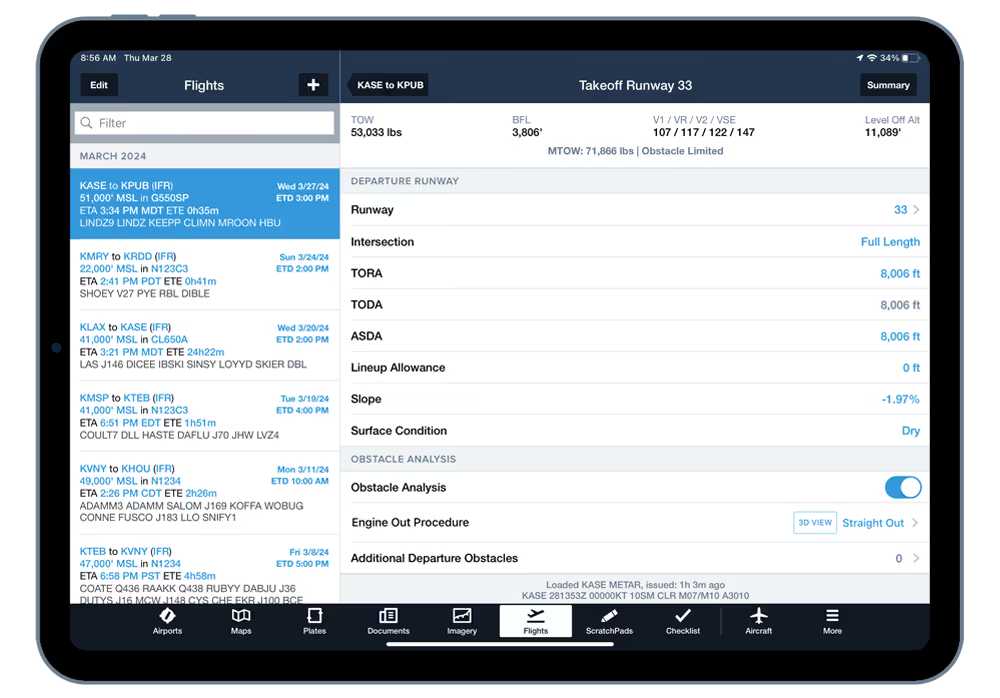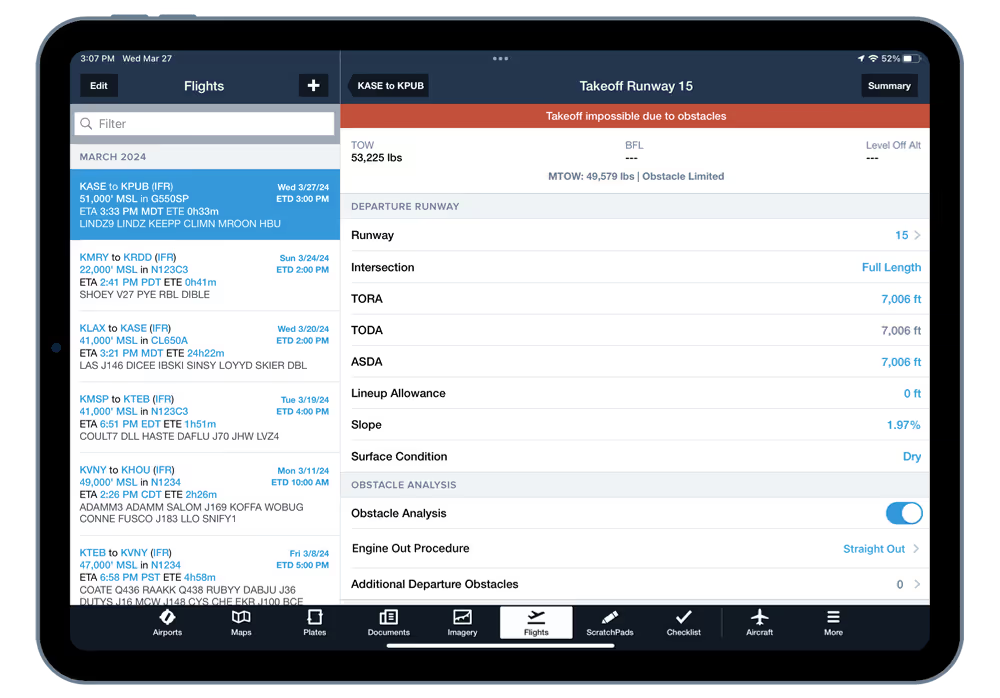How Deceptive Weather Paves the Way for Runway Excursions and How to Prevent Them

Ensuring the safety of runways, aircraft, flights, and passengers is a complex and multifaceted discipline; one that demands unwavering attention as risks and their impact continue to evolve.
Recent studies conducted by the Flight Safety Foundation, as outlined in their 2022 Safety Report, have shed light on a significant change like airline accidents. Among the five primary categories, runway excursions now rank second.
While this may appear as merely another statistic, it could serve as a pivotal catalyst in reshaping our perspective on runway excursions and their impact on your operations.
What is a Runway Excursion?
A runway excursion is an incident where an aircraft unintentionally departs from the runway surface during takeoff or landing. It can result in structural damage to the aircraft, potential injuries to passengers and crew, and significant operational disruptions.
Since 2017, there have been approximately 117 recorded excursion accidents. Of these incidents, 80% occurred during landing, with veer-offs being more predominant than overruns.
Runway Incursion vs. Excursion: What's the Difference?
Both runway excursions and incursions pose risks to aircraft, airport operations, and, most importantly, the safety of the passengers and crew. The difference between them, however, highlights the varying risks.
- A runway excursion occurs when an aircraft accidentally or improperly exits the runway, either veering off or overshooting the end of the runway.
- A runway incursion is the unauthorized presence of an aircraft, vehicle, or person on the runway's designated landing and take-off area. It is primarily classified as a 'surface incident' and typically occurs due to unauthorized movements on the runway.
Runway incursions mainly pose a risk as surface incidents, while runway excursions impact the overall safety of the airport, often leading to potential collisions with aircraft, personnel, or other objects.
A Common Factor In Runway Excursions: Deceptive Weather
Runway excursions involve a myriad of risk factors, and business aviation pilots often gain crucial insights for risk mitigation and safety by analyzing data from previous excursions.
According to the ASN database, the most significant risk factors include:
- Flight crew handling errors (related to speed and directional control)
- Contaminated runways
- Crosswinds
- Late or inaccurate runway or weather reports
- Mechanical failures or gear collapses
- Failure to reject
- Takeoff before V1 (the maximum speed at which a rejected takeoff can be initiated in an emergency)
With runway excursions being one of the most common causes of airport accidents, it comes as no surprise that there are quite a few elements that can pose potential risks, as we see mentioned above. However, one of the most frequent contributing factors that lead to runway excursions is deceptive weather.
Deceptive weather conditions, such as strong crosswinds, low visibility, or slippery runway surfaces due to rain or snow, have the potential to mislead pilots into underestimating the actual challenges of the runway. This places pressure on pilots to thoroughly assess and adapt to prevailing weather conditions, enabling them to make informed decisions and ensure optimal runway performance.
How to Prevent Runway Excursions
While we cannot control the weather, there are several best practices in business aviation to minimize the risk of runway excursions.
Continuously Monitor Weather Conditions
Landing the aircraft in strong tailwinds can result in a runway overrun. Aircraft are typically certified to a maximum landing tailwind component. Exceeding this limitation increases the risk of a runway excursion. Therefore, it’s crucial to continuously monitor real-time weather conditions, especially just before takeoff or landing.
Conduct Thorough Assessments of Runway Conditions Before Takeoff and Landing
Many runway excursions occur due to pilots using incorrect runway conditions to calculate the landing performance of an aircraft. For instance, if pilots calculate landing speeds and distance for a dry runway when it is wet, there’s a risk of the aircraft not stopping in time. To mitigate this, pilots should be in constant communication with ground personnel to receive real-time updates on runway conditions before takeoff or landing.
Ensure Accurate Weight and Balance Calculations
Errors in weight and balance calculations often contribute to runway excursions during takeoff. Underestimating the aircraft’s weight can lead to a scenario where the pilot runs out of runway before a successful takeoff.
To save time, lightweight aircraft may opt to take off from an intersection point instead of entering and backtracking the entire runway for the departure lineup. However, underestimating the weight and failure to adjust the amount of available runway remaining in calculations may result in the aircraft running out of runway during the takeoff from an intersection point.
A meticulous approach to weight and balance calculations ensures that the aircraft has sufficient power and runway distance for a safe takeoff. Operators should have a process to ensure proper weight and balance, including error detection, to minimize the risk of runway excursions.
Avoid Runway Excursions with ForeFlight
To effectively prevent runway excursions, flight crews must stay informed about real-time runway conditions and how they could impact takeoff or landing.
This is where Foreflight's Runway Analysis proves invaluable.
Specify Adverse Runway Conditions to Properly Account for Their Impacts
With our Runway Analysis tool, business aviation pilots eliminate guesswork when assessing how adverse runway conditions might affect their takeoff or landing. By specifying these conditions directly within ForeFlight, pilots can integrate them into their performance calculations.

Provide Aircraft Configuration Details to Ensure an Accurate Calculation
Different aircraft types have various configuration settings designed to address the challenges posed by adverse weather or runway conditions during takeoff or landing. Runway Analysis incorporates these configuration settings to ensure that the calculated runway performance closely matches the actual circumstances.

Get Detailed Safety Warnings and Error Messages
ForeFlight provides several warning and error messages to alert you when the calculated results exceed the aircraft's or runway's limits. These include aircraft-specific alerts for invalid takeoff or landing configurations and warnings when your aircraft is out of balance.
Safety for your passengers and the flight crew is our top priority, along with minimizing any potential damage to the aircraft or airport infrastructure. Utilizing Runway Analysis not only enhances safety but also reduces the time spent on performance calculations, allowing pilots to focus on other preflight responsibilities.
This not only optimizes and streamlines operations but also enhances flight safety by eliminating the practice of skipping calculations to save time. Pilots can now identify and resolve issues well in advance, reducing delays.

At ForeFlight, we recognize that the greatest risk of all is complacency, both in business operations and safety priorities. That is why, as a data-driven company, we take it upon ourselves to ensure you’re well-equipped to navigate the risk landscape.
We seamlessly merge safety and convenience into one sophisticated runway and obstacle analysis tool that's fully integrated with ForeFlight's planning workflow.
To learn more about ForeFlight's Runway Analysis visit our product page here.
Frequently Asked Questions
What is the difference between runway excursion and runway incursion?
Runway excursions occur when an aircraft veers off of its designated runway or fails to stop before the end of the runway. A runway incursion occurs when an object, aircraft, or personnel enters a runway without authorized permission, often blocking or halting operations.
How often do runway excursions occur in aviation?
According to IATA's Runway Safety Analysis, runway excursions are considered the most frequent type of runway accident, averaging 18 annually worldwide. Overall, runway excursions account for 54.7% of all runway safety accidents.
Are there specific technologies or systems in place to mitigate the risk of runway excursions?
Yes, Foreflight's Runway Analysis add-on allows business aviation pilots to eliminate the guesswork regarding deceptive weather and identify any additional risk factors that may lead to runway excursions.





